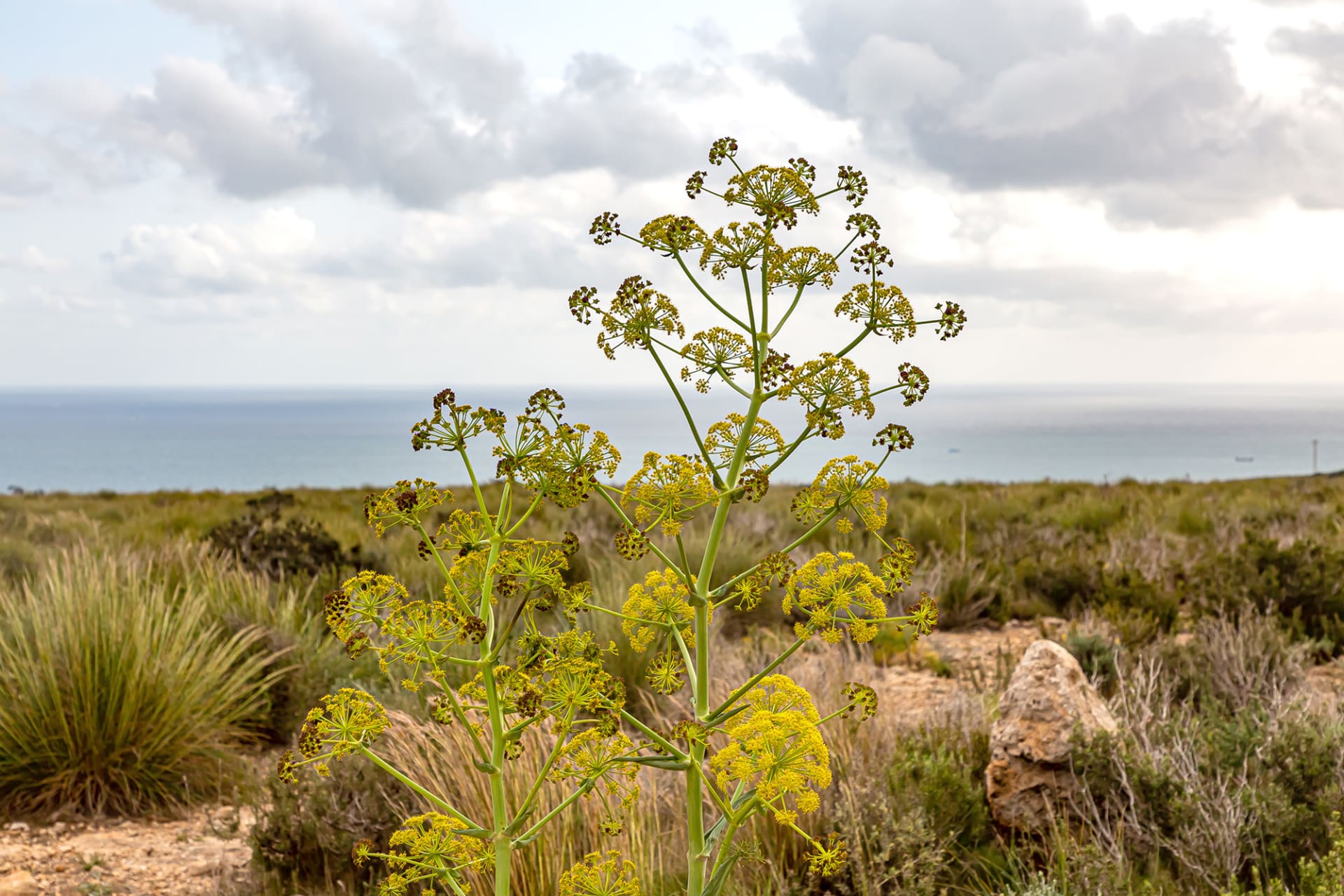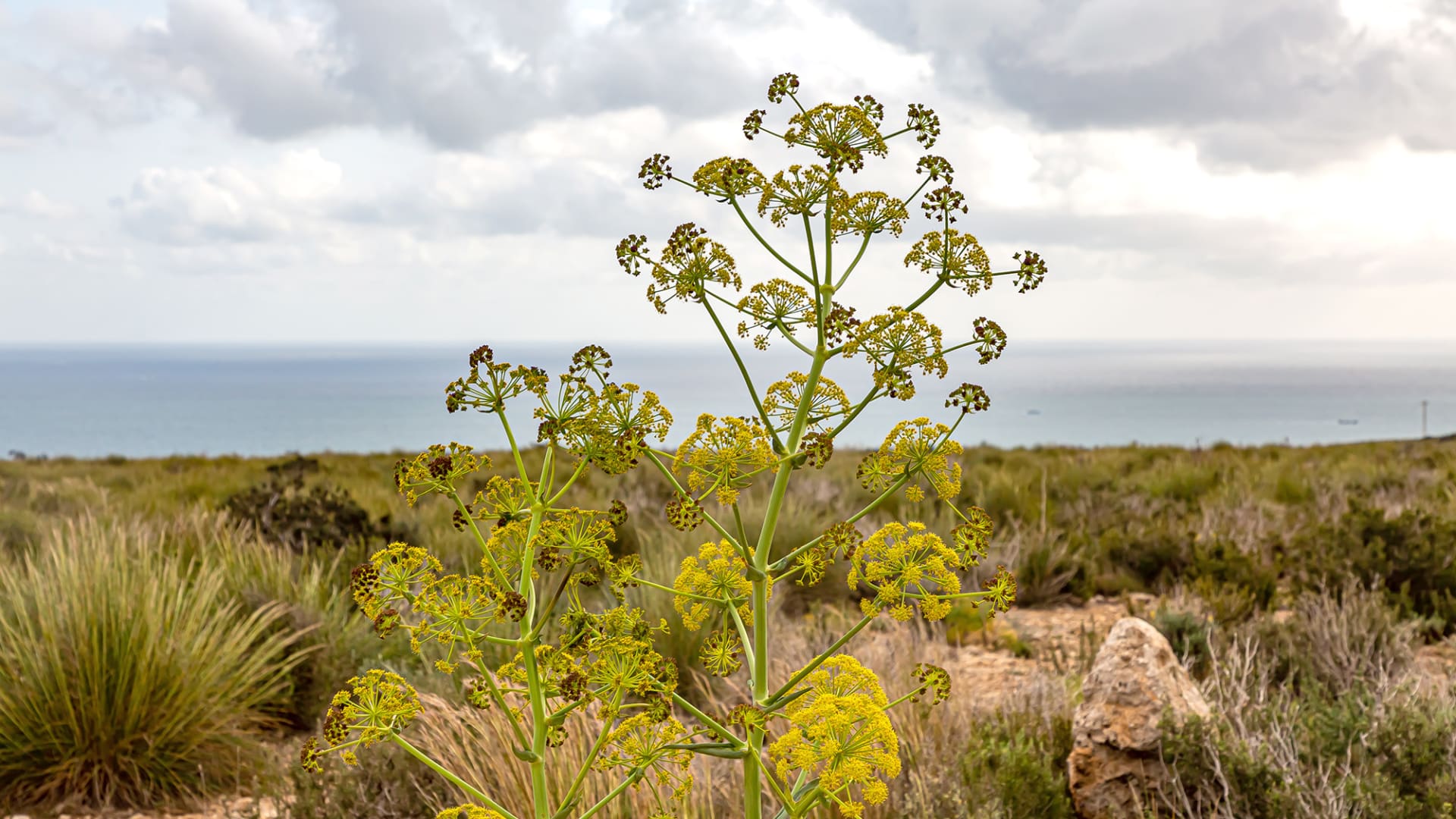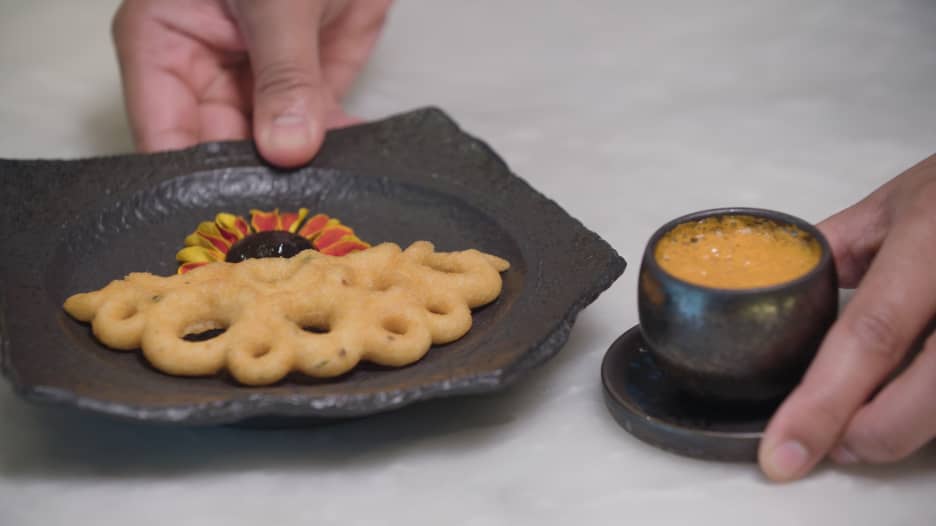دبي، الإمارات العربية المتحدة (CNN)-- هل هو من مقبلات الطعام، أم مجرد دواء، أم مبيد حشري؟ وتبدو نبتة الحلتيت (Asafoetida) بريئة، إذ أنها عبارة عن عن نبتة بريّة تنتمي إلى أفغانستان، وإيران، وأوزبكستان.
وتُستخدم مادة الراتينغ بجذور الحلتيت في المطبخ الهندي عادةً بعد طحنها لتتحول إلى مسحوق، وخلطها بالدّقيق.
وتتمتّع هذه النّبتة برائحة قويّة. وفي الواقع، فإن رائحتها نفّاذة للغاية لدرجة أنّها قد تكون من أكثر المكوّنات إثارةً للخلاف في البلاد.
وتعني كلمة "Asa" العلكة باللغة الفارسيّة، بينما تُترجم كلمة "foetida" اللاتينيّة إلى نتن، ولكن يُطلق على النّبتة اسم "هينغ" فقط في الهند.

وإذا لامست النبتة يدك عن طريق الخطأ، فستبقى الرّائحة بغض النظر عن عدد المرّات التي تقوم فيها بغسل يديك، وعند وضعها على لسانك، ستشعر وكأن فمك يحترق.
وفي سوق "Khari Baoli" بمدينة دلهي القديمة على سبيل المثال، تطغى رائحة "هينغ" على جميع التّوابل الأخرى.
وبالنّسبة لمؤسّسا مدرسة "The School of Showbiz Chefs" للطهي، سيدهارث تالوار، وريا روزاليند رامجي، "نجحت (النّبتة) في سد فجوة نكهات البصل والثوم التي كانت محظورة بسبب المُعتقدات الدينيّة في المجتمعات الهنديّة التي يُشكّل النباتيون الغالبية فيها، مثل مجتمعات جين، ومارواري، وغوجاراتي. ورُغم تنوّع الطّهي في الهند، إلا أن الهينغ (نبتة الحلتيت) أمر ثابت".
ويتجنّب مجتمع "جين" على سبيل المثال البصل، والثّوم، والزّنجبيل بالإضافة لعدم تناول اللحوم.
وتعترف رامجي أن رائحة "هينغ" قد تشكّل تحديًا، وتمت مقارنة النّسخة الخامة لها بالملفوف الفاسد، كما أُطلق عليها أيضًا لقب "روث الشيطان".
ولكن تفي كميّة صغيرة منها فقط بالغرض.
وينصح تالوار بوضع كميّة ضئيلة من الـ"هينغ" في الزّيت السّاخن.
ويشتري غالبية الأشخاص النّبتة على هيئة مسحوق يُخلط مع دقيق الأرز أو القمح. ومع ذلك، يشتري الطهاة المغامرون النبتة بهيئة بلوريّة صّلبة تشبه الملح الصخري.
تاريخ "هينغ"
وينسب بعض العلماء الفضل في جلب الـ"هينغ" إلى الهند لأوّل مرّة إلى الإسكندر الأكبر.
وشرح المؤرّخ بمجال الطّهي، الدكتور أشيش تشوبرا أن "النظريّة الشّائعة تنص بأنّ جيش الإسكندر صادف نبتة الحلتيت في جبال هندو كوش، وخلط بينها وبين نبتة السلفيوم النّادرة، والتي تتمتّع بخصائص مشابهة للحلتيت".
وحمل الجيش النّبتة إلى الهند فقط ليكتشف لاحقًا أنّ الأمر لم يكن كما تم توقعه.
وأضاف تشوبرا أن نبتة "هينغ" استُخدمت في جوانب من المطبخ اليوناني الروماني، ولكن لم يدم الأمر طويلاً.
وغالبًا ما يغيب هذا المكوّن عن الطعام الغربي، مع وجود استثناء واحد ملحوظ، أي صلصة "ورشسترشاير".
ولكن مع تغيّر شهيّة الأشخاص، وأنماط الطعام العالميّة، يحاول بعض الطهاة إعادة صياغة وصفاتهم عبر تخطّي البصل، والثّوم، واستبدالهما بنبتة الحلتيت.
وتبيع الشركة الأمريكية "Burlap & Barrel" حتّى مزيجًا من نبتة "هينغ" البريّة بالكركم، ويتم تسويقها للأشخاص الذين يعانون من حساسية الثّوم، أو أولئك الذين يتّبعون حمية بأطعمة منخفضة "الفودماب" (FODMAP).
وليست النّكهة السّبب الوحيد المشجّع لشراء هذا المكوّن. ووفقًا لما ذكرته المكتبة الوطنيّة للطّب، استُخدمت نبتة الحلتيت كطاردة للسّعال، ومضادة للتشنّج، ولقتل الطفيليات، أو الدّيدان. ويرى البعض أنّها بمثابة علاج فعّال لغازات المعدة.
وفي هذه الأيام، تُستخدم خصائصه المُنفرة بشكلٍ أفضل كمبيد للآفات في مجال الزّراعة العضويّة.







